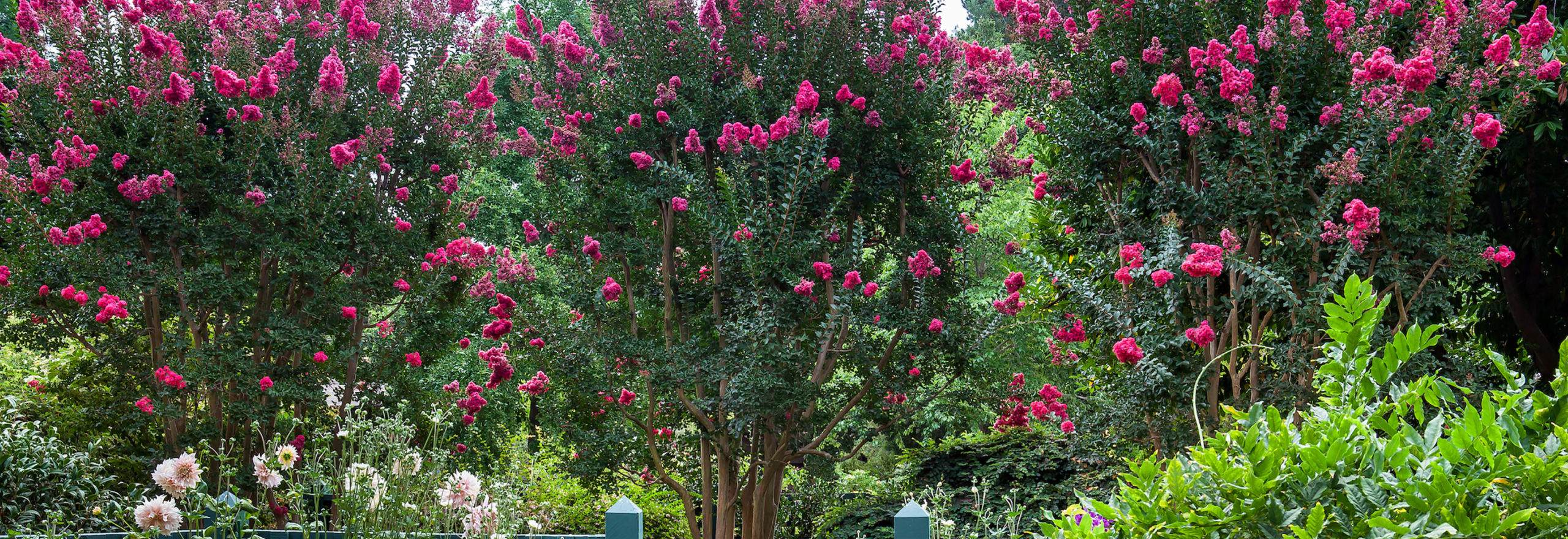
How Plants Survive in Arid Environments
We’ve developed this tour to help you understand what plants do to survive in hot, dry environments. Using the succulents, cacti and grasses of Gamble Garden as examples we'll see how plants that live in arid environments have evolved adaptations that conserve what little water is available in desert and Mediterranean areas and how they protect themselves from the heat of the day.
Please note: Gamble Garden's current COVID-19 policy requires masks and social distancing. During this period, the garden is closed to the public on Tuesday and Wednesday mornings.
You can open this guide on your mobile device and use it to walk around the garden, or you can do an ‘armchair’ tour by reading the text and looking at the pictures in your home.
Audience: All ages, with optional sections on biochemistry
It will take about 30 minutes for the tour if you’re walking around the garden.
CAUTION! As we go through this tour, we’re going to encounter various kinds of cacti. For some reason, people like to touch the spines to see if they are sharp. This is a very bad idea. In addition to the big spines you can see, many cacti have small, almost invisible spines called ‘trichomes’. These small spines have barbs on them like a fishhook. Once they are embedded in your skin they are extremely irritating and difficult to remove. Please do not touch any cactus.
Let’s get started. Walk over to the white greenhouse (#1 on the map below).
Into the Desert: Preparing for Our Walk
Let’s take a moment to consider how you might prepare for a hike on hot, cloudless day in the middle of summer.
- You’d certainly bring along a bottle of water
- You might wear a hat and loose clothing
- You’d put on sunscreen
- You might carry an umbrella
- You might have a bandanna to cover your nose and mouth
Plants have evolved adaptations that mimic all these human preparations:
- They have strategies to obtain and store water
- They have strategies to minimize water loss from their leaves due to evaporation
- They have evolved sunscreens to protect against UV radiation
- They can cover their ‘mouths’ to minimize evaporation
Why would a plant need to store water?
- The plants on this tour live in a place where there isn’t much water all year round, like a desert. The official definition of a desert is a place with less than 10 inches of rain per year.
- They live in a place where rainfall is seasonal or unreliable – Mediterranean climates like California where summer rain is unlikely and winter rain varies considerably year to year.
Stop #1: In front of the Greenhouse
Let’s look at some plants that can store water. Succulents and cacti are the masters of water storage. What is a succulent? In general, they are plants whose leaves, stems, or roots have evolved to store water. However,
- Some people exclude cacti
- Some people exclude plants with root water storage (such as euphorbias)
- Some people exclude bromeliads (such as pineapples or puya )
The problem is that ‘succulent’ is a characteristic of plants, not a single family. There are about 60 plant families that could be termed succulents, with 1000s of plants.
Let’s compare the leaves of a succulent (jade plant) with the leaves of a nearby sage plant. You’ll find these two plants near the white greenhouse (the sage is near the rain barrel). Before scrolling down, think about how they are different.
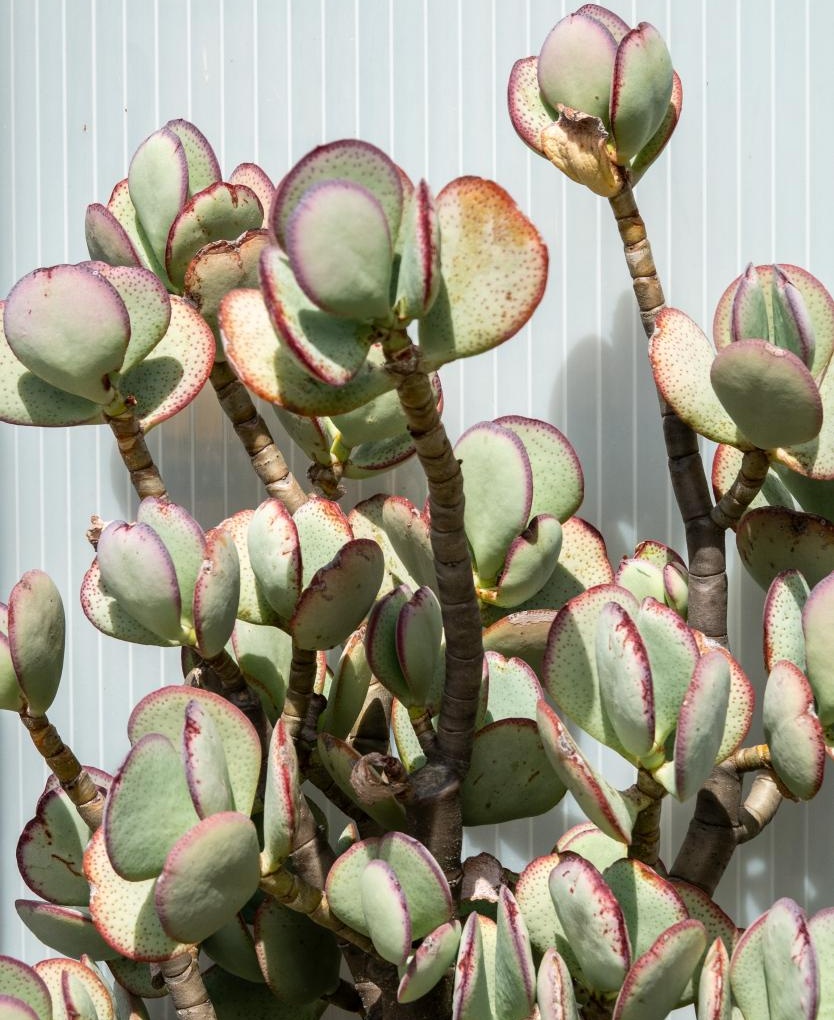
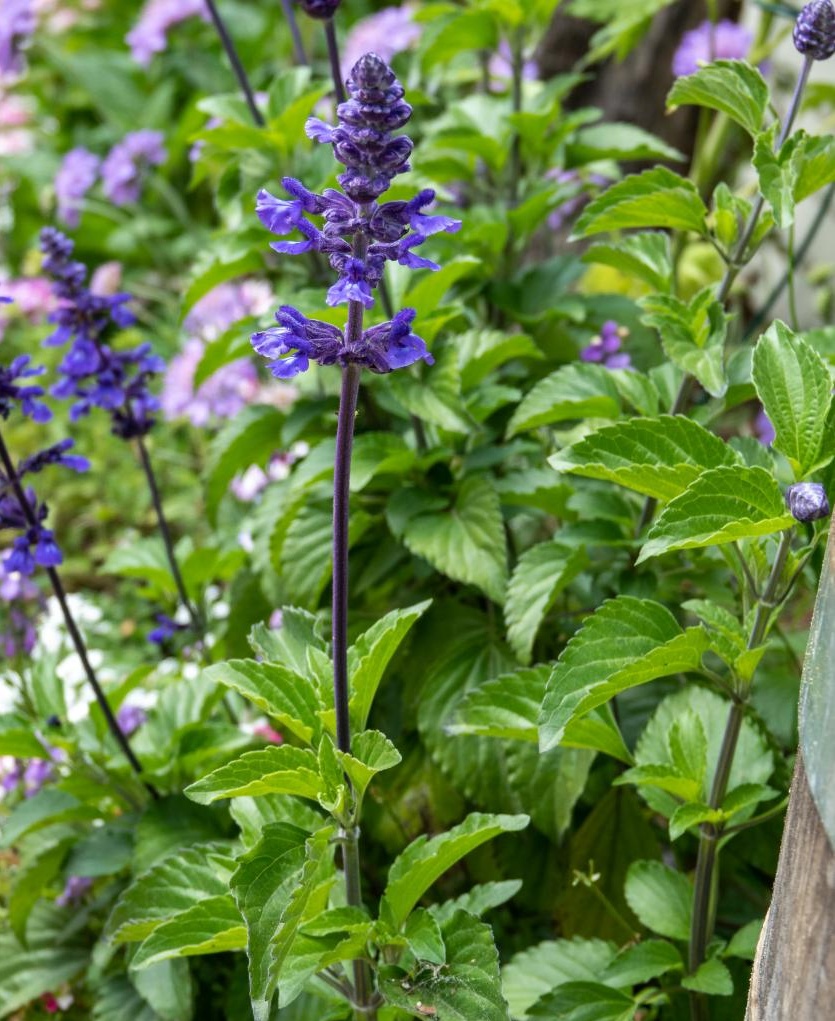
- Jade leaves are thick; sage leaves are thin
- Jade leaves have a waxy coating; sage leaves are velvety and cotton-like
- Jade leaves are spongy; sage leaves are flatter and tear easily
Do not pick a jade leaf but look at the picture below.
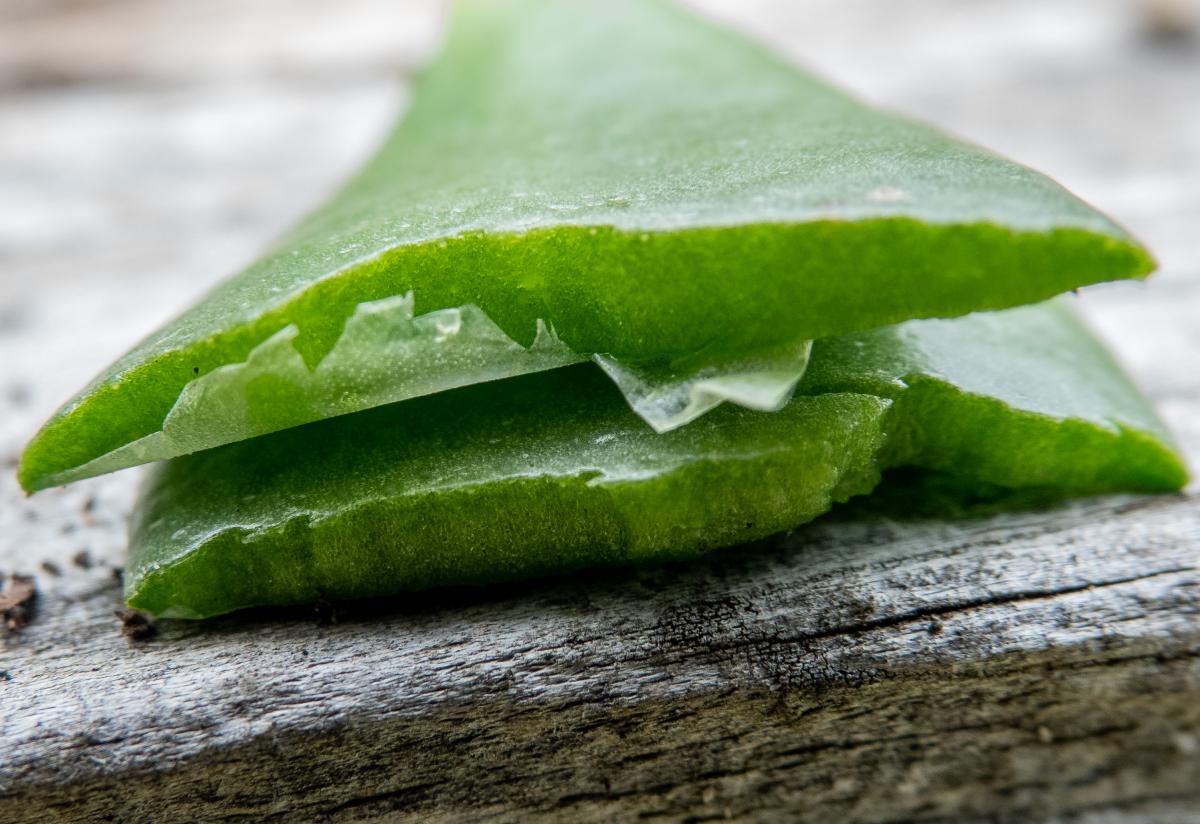
What happens to the stored water if you tip the leaf? Does it pour out? No, the water is stored inside the leaf cells and it is mixed with sugars and protein to make it less likely to evaporate. The interior is sponge-like and holds the water.
Now, let’s look at an Aeonium on the other side of the path near the fence. What do you notice about this plant?
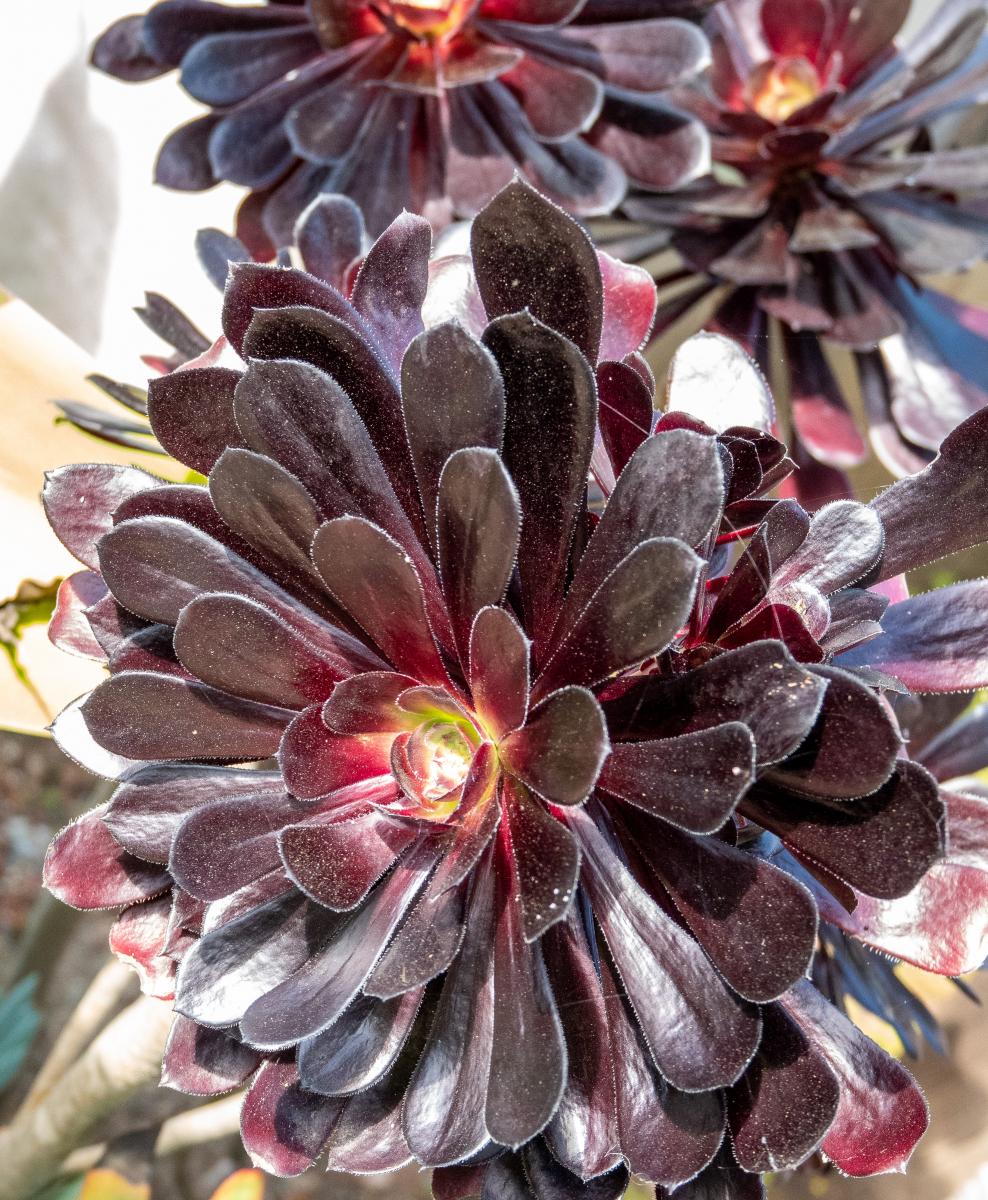
- Leaves are thick and water filled.
- Also waxy leaves arranged in swirls.
- Leaves may be colored for sun protection
In the same area, you’ll find some Aloes. How would you describe them?

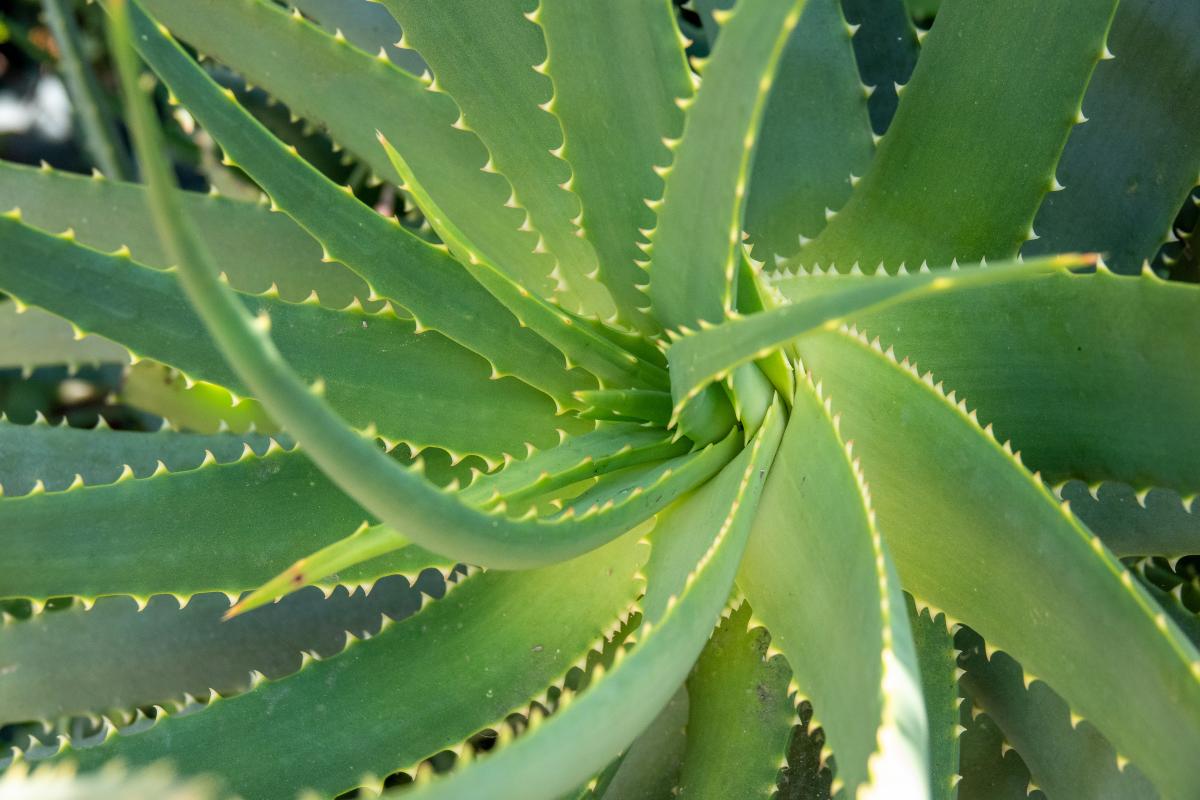
- Thick leaves
- Waxy surface
- Low to ground
- Grows in clumps
- Spikes!
Many aloes have spikes at the sides and ends of the leaves. Why do you think that is?
If you are a plant that stores water in a dry environment, you are going to be very popular, as nearly every animal is looking for water. Lots of succulents and cacti have evolved spines and thorns to protect themselves from predators. Also, frequently the stored water is mixed with poisons or bitter-tasting substances.
But sometimes you want to be popular. Why? Many succulents produce fluid nectar in their flowers to attract pollinators like insects, bats, and hummingbirds. If you are in the garden when the Aloes are in bloom, take a moment to watch the plants for pollinators. You might see a butterfly or hummingbird.
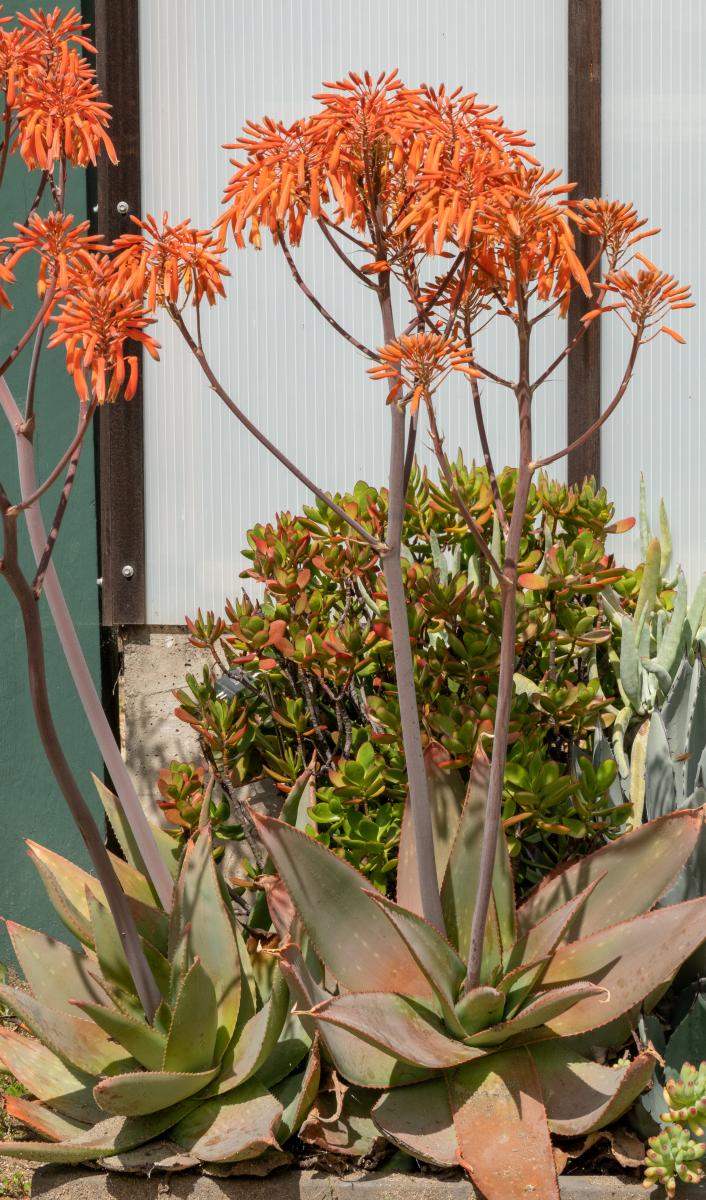
We’ve seen plants that store their water in stems and leaves. Once you’ve stored the water, you don’t want to lose it. Thick waxy surfaces are one way plants minimize evaporation.
See the Jade plant or the Senecio (suh-knee-see-oh) species below with blue stems. You can also find these plants along the path in front of the greenhouses and in other places at Gamble Garden as well.
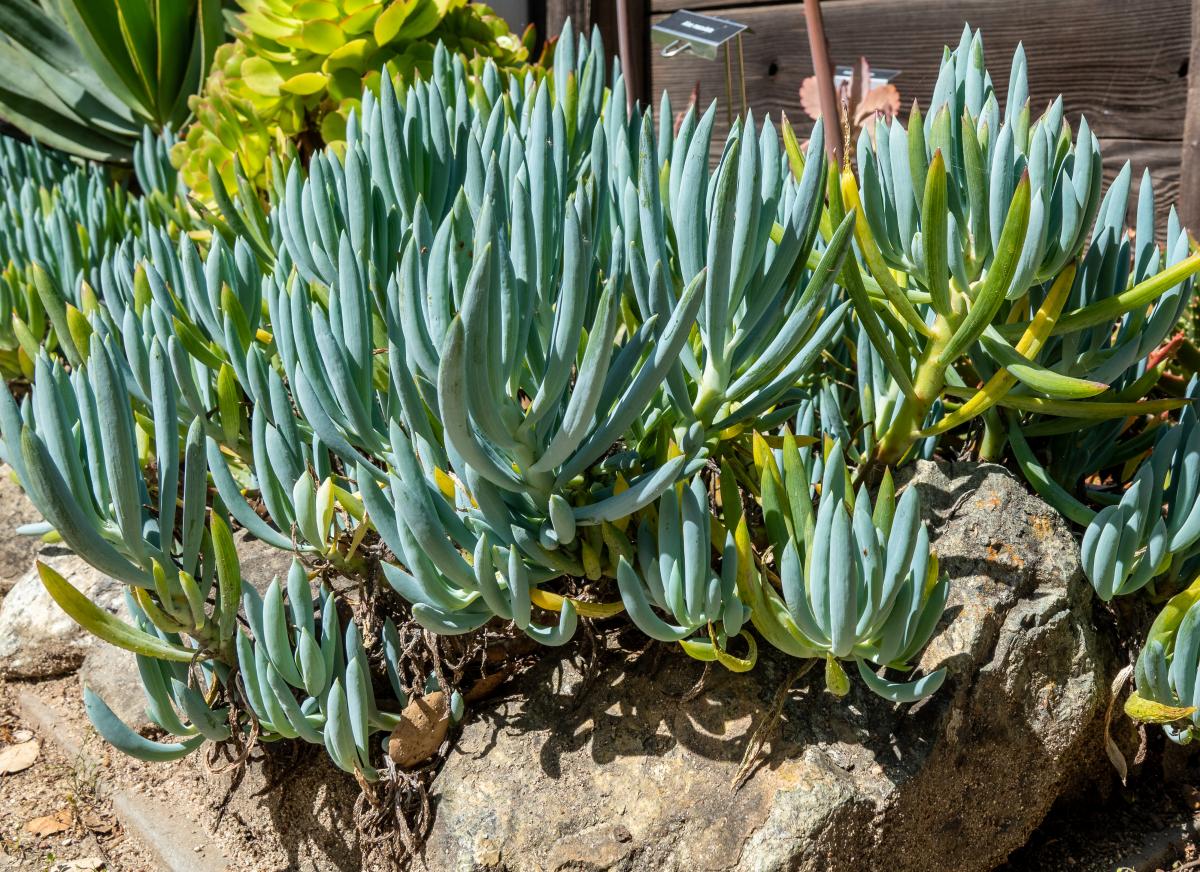
Stop #2: Cacti in the Living Lab
Now walk over to the ‘Living Laboratory’ which is the open expanse near the Pollinator Garden (#2 on the map). We’ve put out an array of cacti and succulents here on the benches. Take a look at a barrel cactus (we have several):
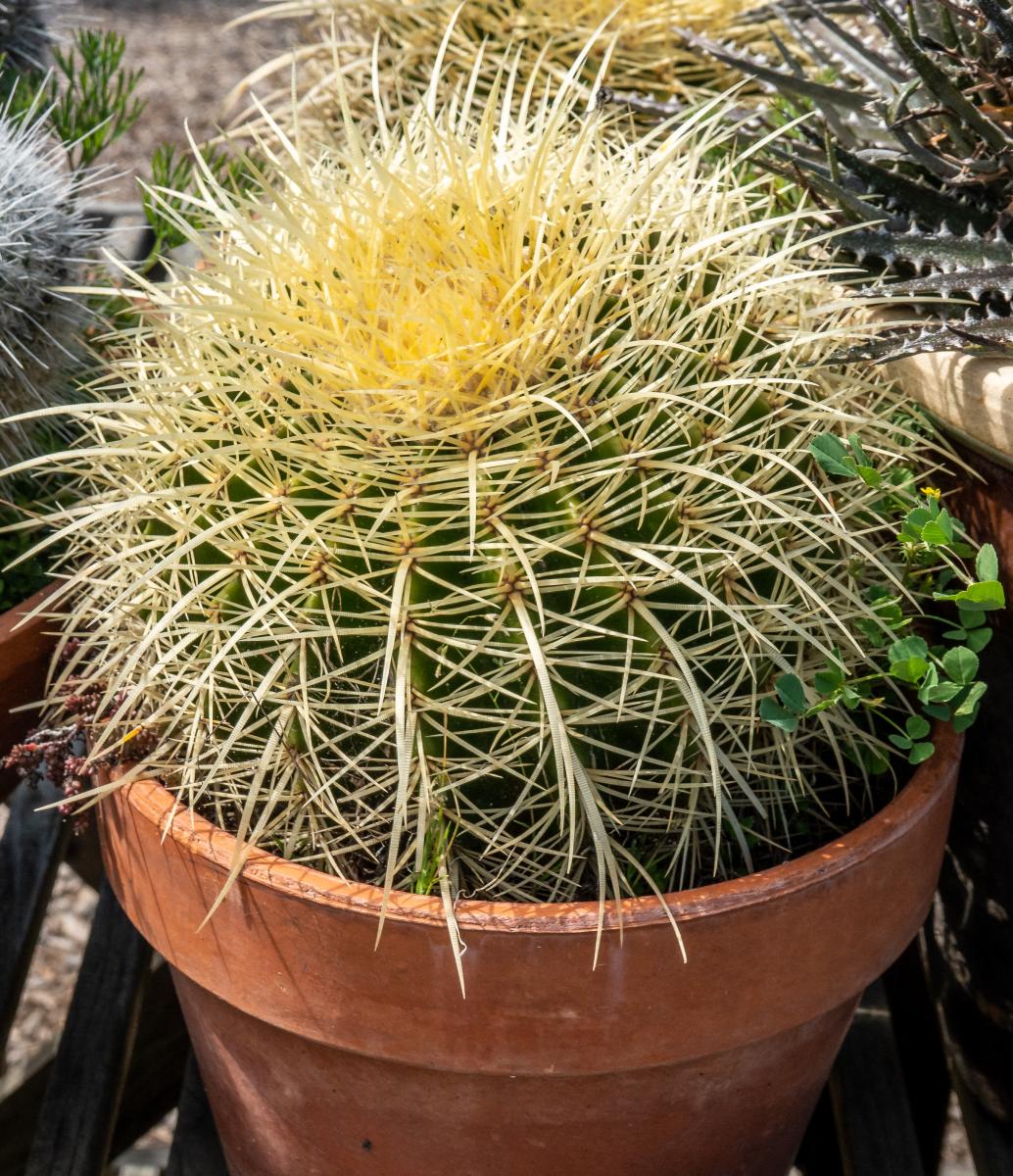
Leaves present an enormous surface area for evaporation. Where are the leaves on a cactus? In fact, those spines evolved from leaves on an earlier plant. Not having leaves means much less evaporation. The only photosynthetic part of the barrel cactus is the stem.
Do you see the pleats on the stem of the barrel cactus? When water is abundant, the stem can swell up like an accordion to store additional water. During the dry season, the pleats will shrink down as the cactus uses the water.
In this same area, you find a Mammillaria cactus:
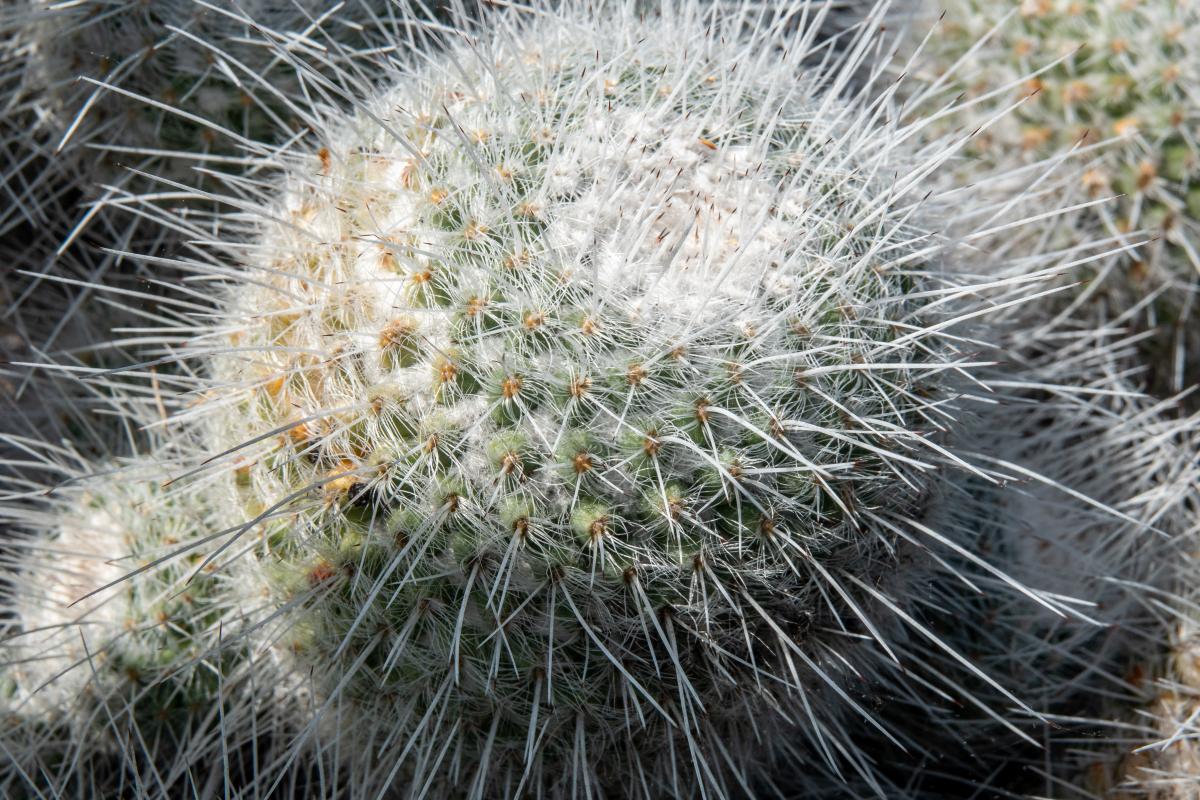
Not only does the Mammillaria have large protective spines, but also fuzzy, hair-like coverings which block out the sunlight. In some species covered with dense, fine hairs, more than half the sunlight is blocked out and air movement around the stem is restricted to cut down on evaporation. It’s kind of like wearing a loose, white shirt.
Here’s another Mammillaria on the same bench:

Remember the large Aloe we saw by the greenhouse? Many aloes and cacti grow in large clumps, which act like an umbrella to keep the soil below cooler.
Waxy surfaces, no leaves, reflective hairs and clumping are all strategies that help to minimize evaporation and help these plants retain the valuable water they have collected.
>> A Look into Photosynthesis and Plant chemistry: Cacti
We would like to provide some background about plant biochemistry. Even if you don’t understand the chemistry involved, we think you’ll find the general concepts interesting.
Desert plants have a huge problem. The basic formula of photosynthesis is:
water + carbon dioxide + sunlight → sugars + oxygen
This equation describes how plants take in water and carbon dioxide and use energy from the sun to convert it into food for the plant (sugars) and oxygen as a byproduct. The earliest plants evolved a form of photosynthesis called ‘C3 photosynthesis’ which takes place inside structures called ‘chloroplasts’ in a single type of leaf cell:
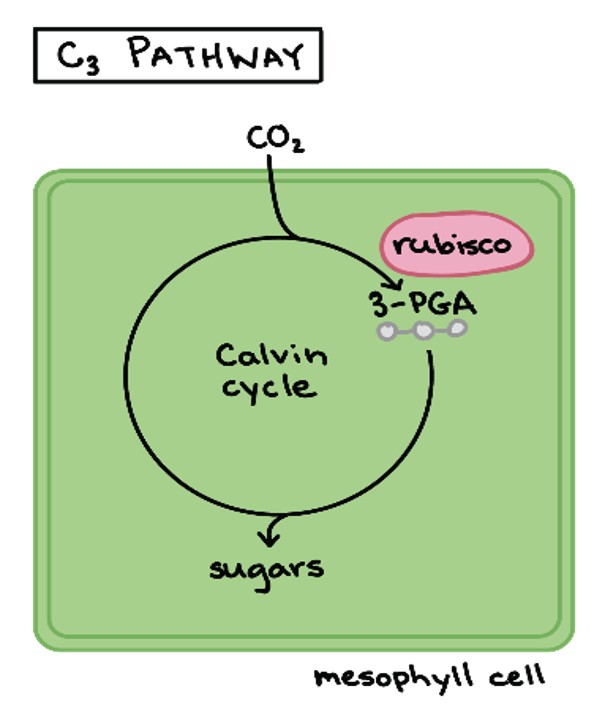
(credit: Kahn Academy)
While this overall equation looks simple, photosynthesis involves dozens of intermediate steps. It is also divided into two processes: one which can only occur in sunlight, and another which can occur in light or darkness. The left side of the equation above describes the ingredients needed for photosynthesis. Water comes from the roots and we’ve looked at how it is stored. Sunlight is plentiful in the desert.
Carbon dioxide comes from the air and there are little holes (called stomata) in the leaves to let the carbon dioxide in and the oxygen out. But what happens when you breathe through your mouth on a hot day? Your mouth dries out as the moisture is carried away by evaporation. This happens to plants too.
If you cover your mouth, you won’t lose moisture – but you can’t breathe. Some plants, like those in the jade family, have evolved a way to minimize evaporation. They only open their stomata at night when it is cooler. They take in carbon dioxide and store it as an organic acid.
Then during the day, they close their stomata, convert the stored acid back to carbon dioxide, and complete the photosynthetic process without losing water to evaporation.
So, the two processes of photosynthesis are separated in time. (If you are interested, this adaptation is called Crassulacean Acid Metabolism (CAM). It is named for the Crassulaceae, the family of jade plants).
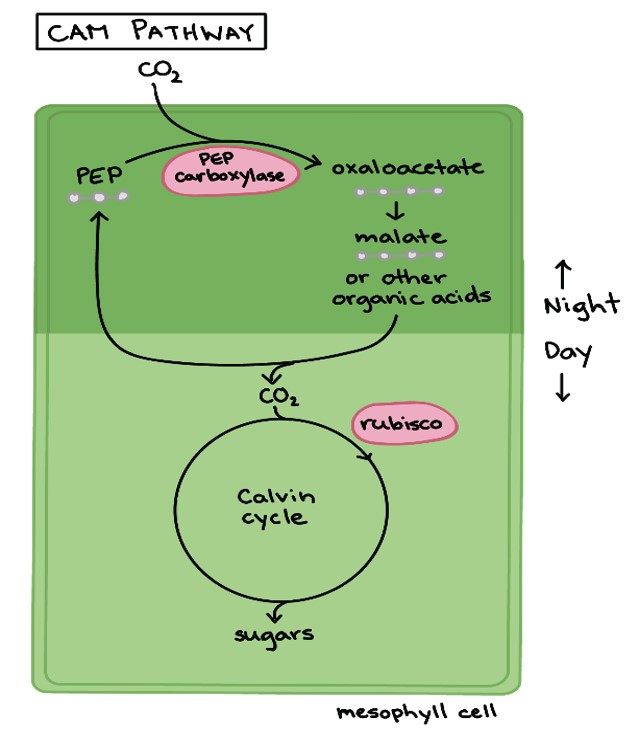
(credit: Kahn Academy)
Stop #3: Grasses in the California Garden
Grasses have evolved yet another way to cope with hot, dry climates. You’ll find lots of examples of grasses at Gamble Garden. This one is in the California garden (#3 on the map):
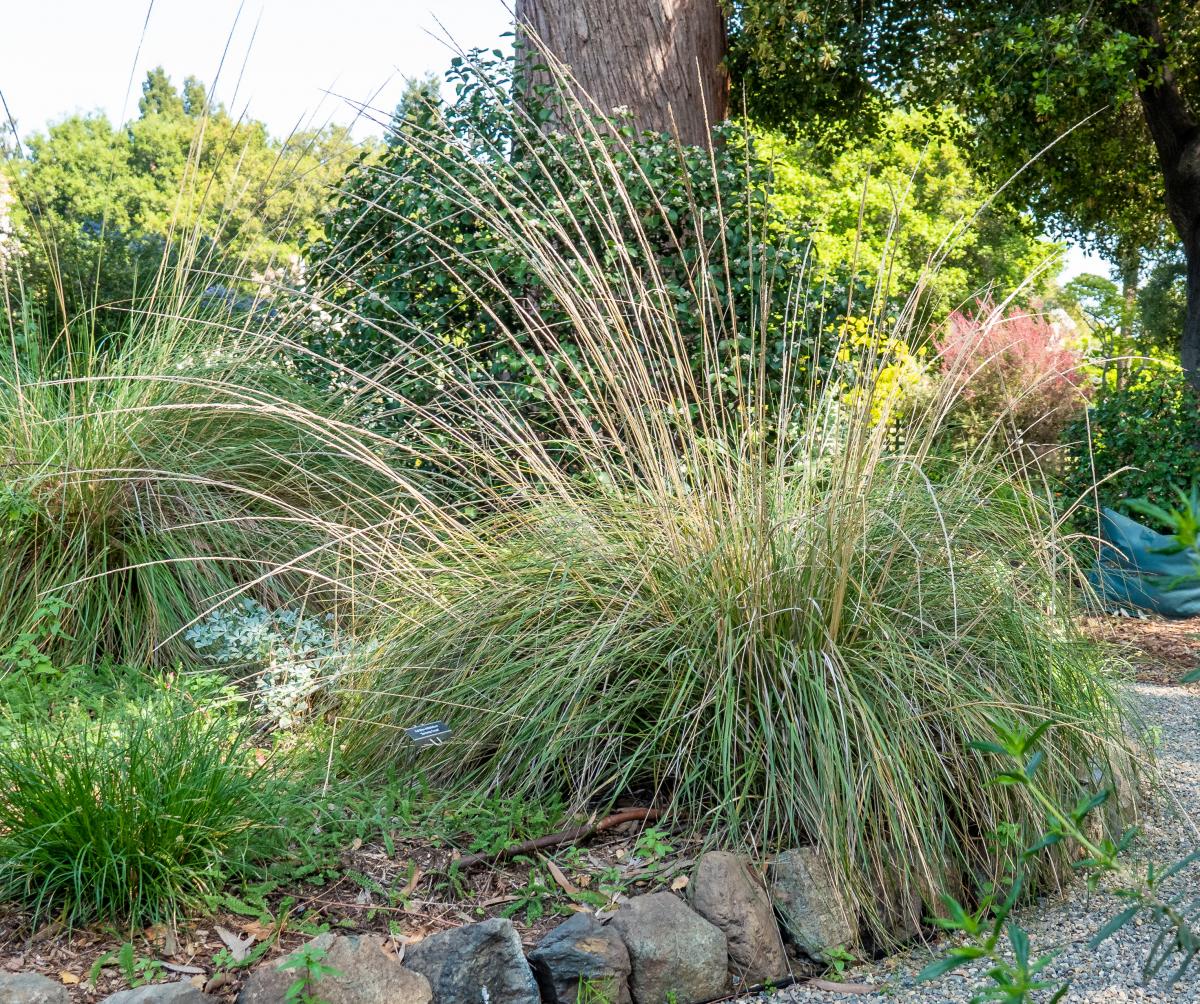
Did you remember to put on your sunscreen before going out? Plants are out in the sun all the time and can suffer from UV damage just like us. Lots of succulents and cacti have waxy, resinous surfaces, or colored surfaces to protect them. We’ve also seen how many cacti cover themselves with ‘hair’ to cut down on the sunlight. Interestingly, plants also produce sunscreen: ‘sinapate esters’ which are UV-B blockers that protect them from damage. The poppy below is an example of a sunscreen produces.
Another strategy that plants can use to beat the heat is to go dormant during the dry season. You may notice poppies blooming and green native grasses around the time of the local Spring rains. (At that time you can find poppies in the Learning Laboratory and other places at Gamble Garden.)
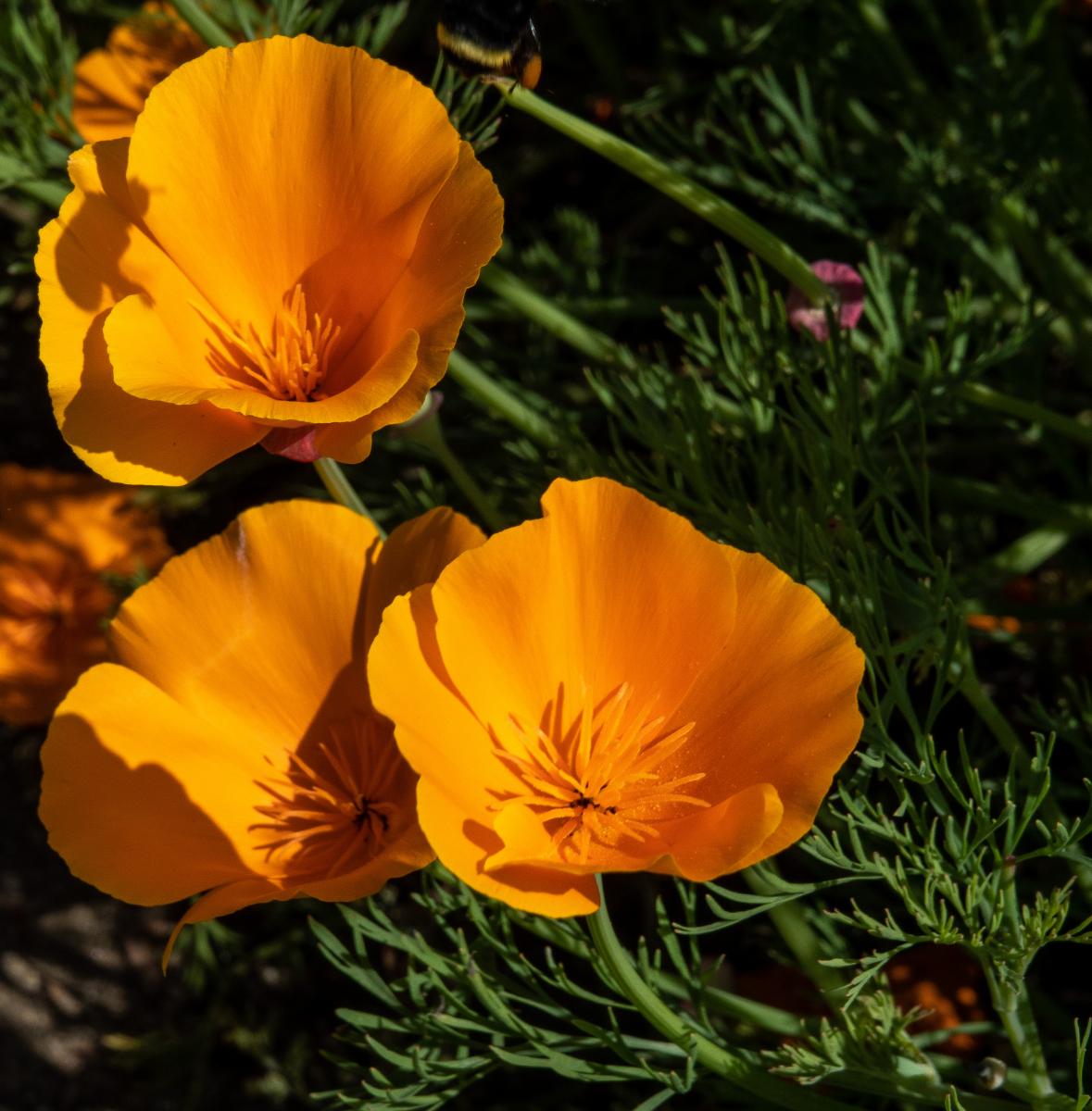
What happens to poppies and grasses in the summer after they bloom and set seeds? The seeds or plants go dormant in the hottest part of the summer, until the autumn rains come. The water washes away a growth inhibitor in the seeds and the plants grow quickly during and after the wet season. The plant blooms, flowers and set seed quickly – when local hills turn a glorious green.
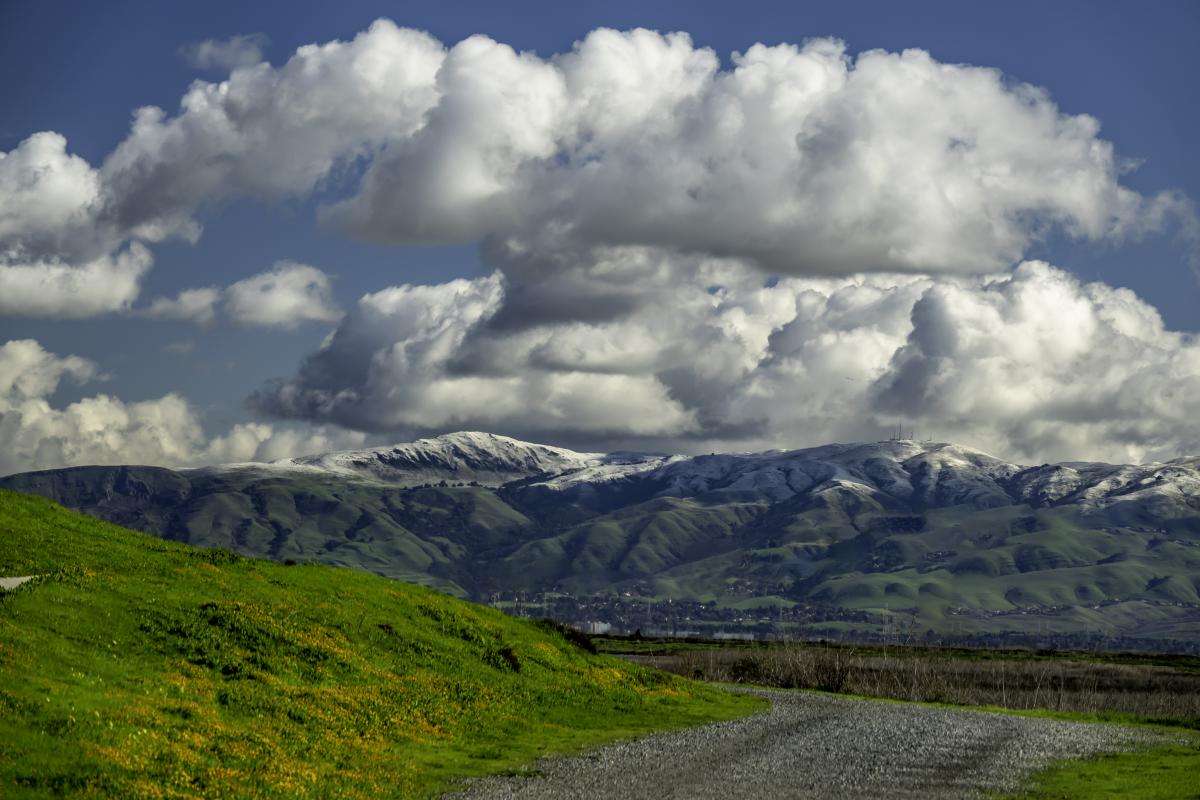
The green (and white) hills of the South Bay during rainy season
Then in the late Spring, the rains stop, and the plants die back and the hills turn golden-brown again. The ability to package up seeds that can remain viable through a drought – and in some cases through many years of drought – is an adaptation that made colonization of the driest, hottest places on earth possible.
We’ve seen how plants have adapted to arid environments by using the same strategies that we do:
- Storing (and sometimes sharing) water
- Having a covering like an umbrella or hat
- Putting on sunscreen
- Closing their ‘mouths’ during hot weather
>> A Look into Photosynthesis and Plant Chemistry: Grasses
It turns out that the enzyme which captures the carbon dioxide is short-circuited by oxygen, especially at high temperatures. This makes C3 photosynthesis less efficient when the plant is in a hot environment.
The grasses solved the problem by spatially protecting the oxygen-sensitive process by locating it deeper in the leaf, away from the stomata.
So, carbon dioxide is again stored as an organic acid in a process that is located in cells near the leaf surface and stomata (mesophyll cells) and is transported deeper in the leaf to bundle sheath cells that are not near the stomata. The acid is converted into carbon dioxide and the rest of the photosynthetic process can occur in an environment that has lower levels of oxygen. If you’d like to follow up on this process, it is called C4 photosynthesis.
Here’s a nice diagram that shows the differences in leaf anatomy between C3 and C4 plants:
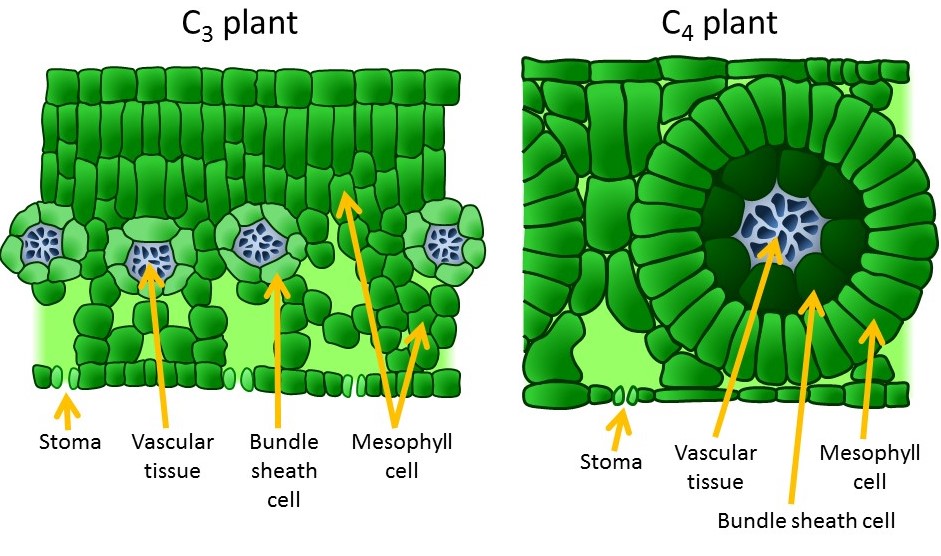
(credit: jobilize.com)
Do you see how in a C4 plant the bundle sheath cells (where the oxygen-sensitive cycle of photosynthesis occurs) are surrounded by mesophyll cells and spatially separated from the stoma, which are open to the outside air?
Because the oxygen concentration in C4 bundle sheath cells is lower, it doesn’t short-circuit the photosynthetic process, and photosynthesis as a whole is much more efficient at high temperatures.
Quiz time! Test what you’ve learned…
For each of the plants below, describe which of the adaptations we’ve discussed the plant is using to thrive in an arid environment. Stroll over to the Western Chile part of our Mediterranean Garden (#4 on the map) and look at this Puya (If you were an animal, would you want to eat this plant?):
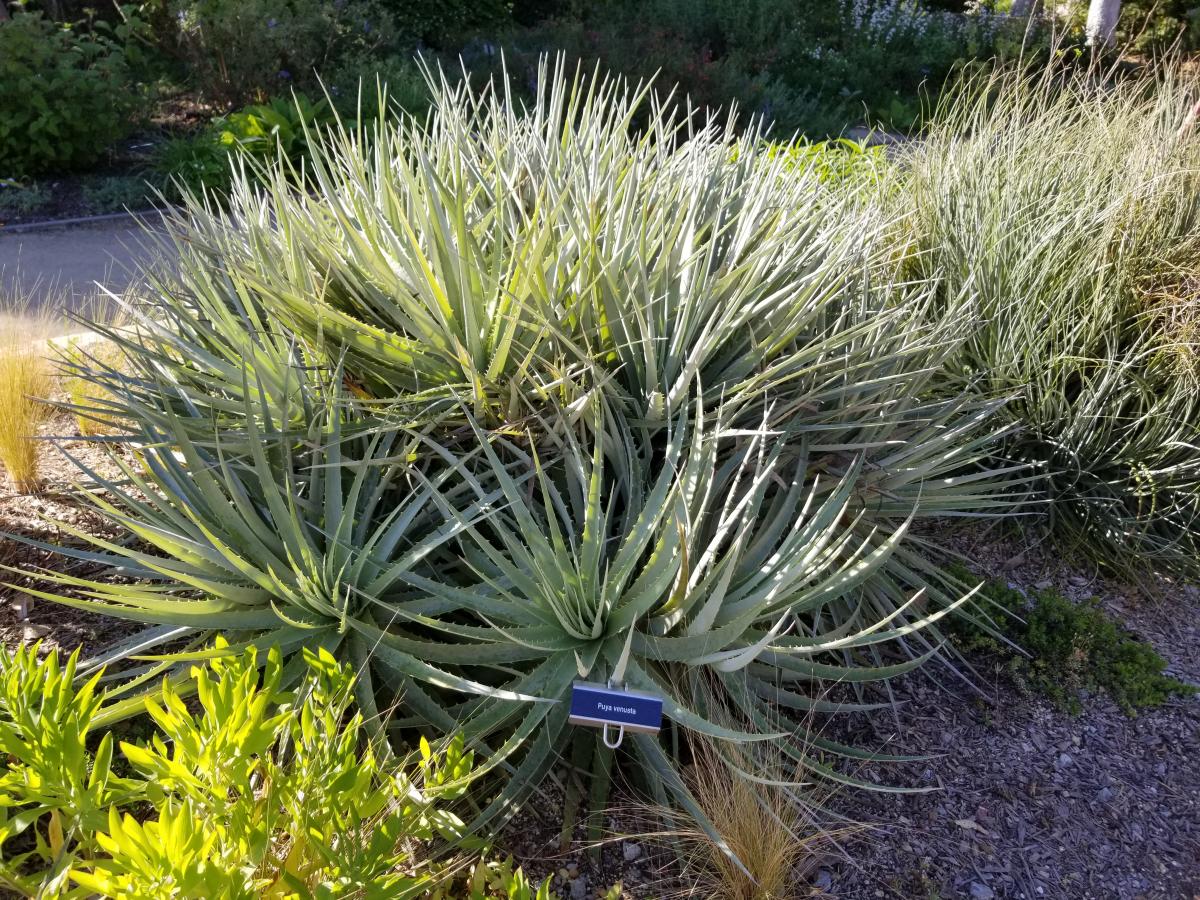
Now, look for this Aloe near the gazebo (#5 on the map):
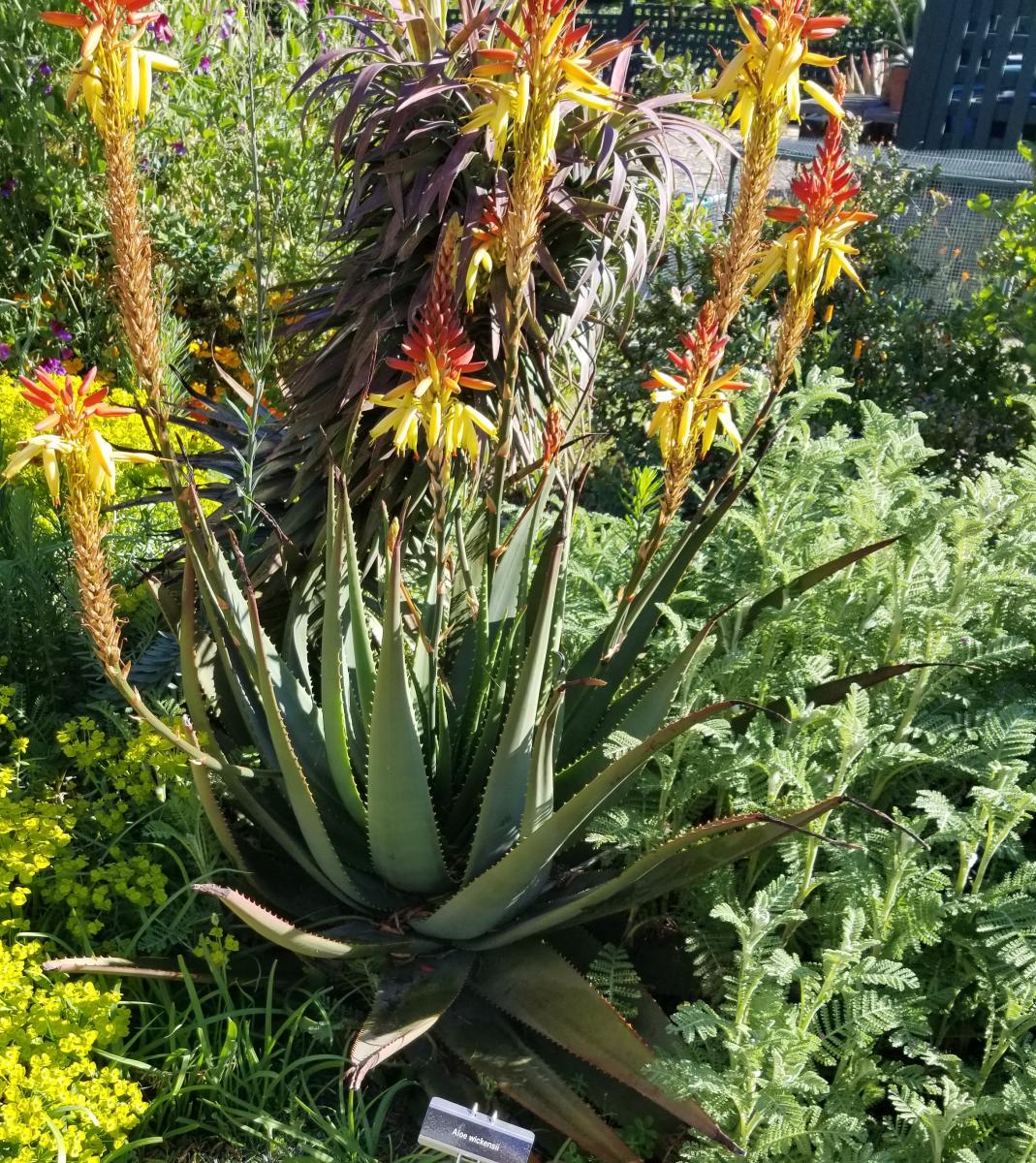
Thick, leathery leaves filled with water; spines for protection; flowers attractive to pollinators.
Lastly, return to the greenhouse area and look for this Agave Americana (#6 on the map):
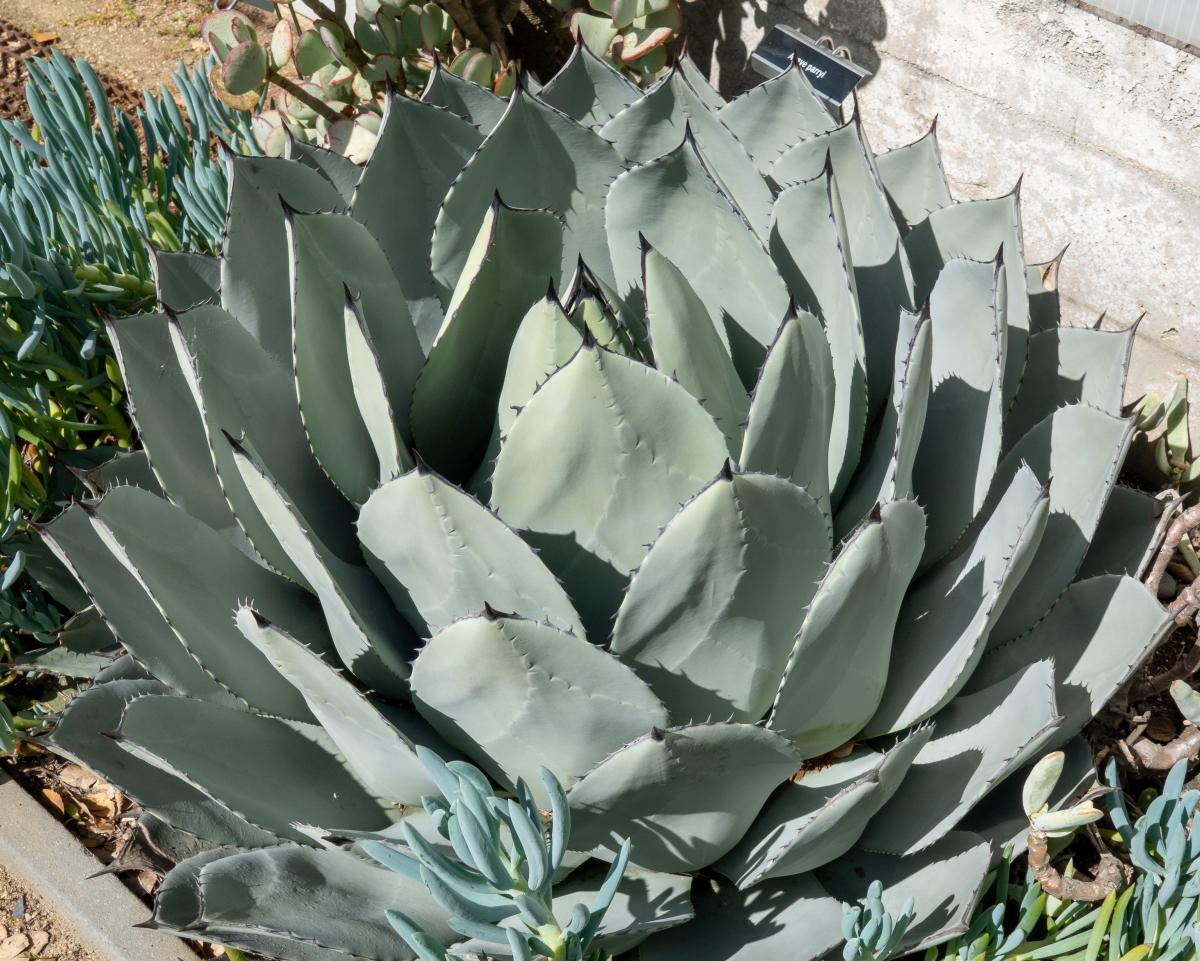
Thick, water-filled, leathery leaves; water storage in leaves and in core; spines for protection.
Succulent care, Tour end, and Donations
When we give this tour in person, we’re frequently asked about how to grow plants that like arid environments. Succulents and cacti, because they are hardy, make excellent house or outdoor plants, especially in our northern California climate.
The biggest mistake that people make is overwatering them. In our area, watering once a week during the summer and maybe once every two weeks in the winter is plenty. The soil should dry out completely in between waterings. Please check out the Gamble Garden plant sale tables for a variety of succulents and cacti you can purchase. Special cactus planting mix which drains quickly can be obtained from a local nursery. Like all plants, cacti and succulents should be planted in pots that have a hole in the bottom for drainage. Never let the roots stay soaked.
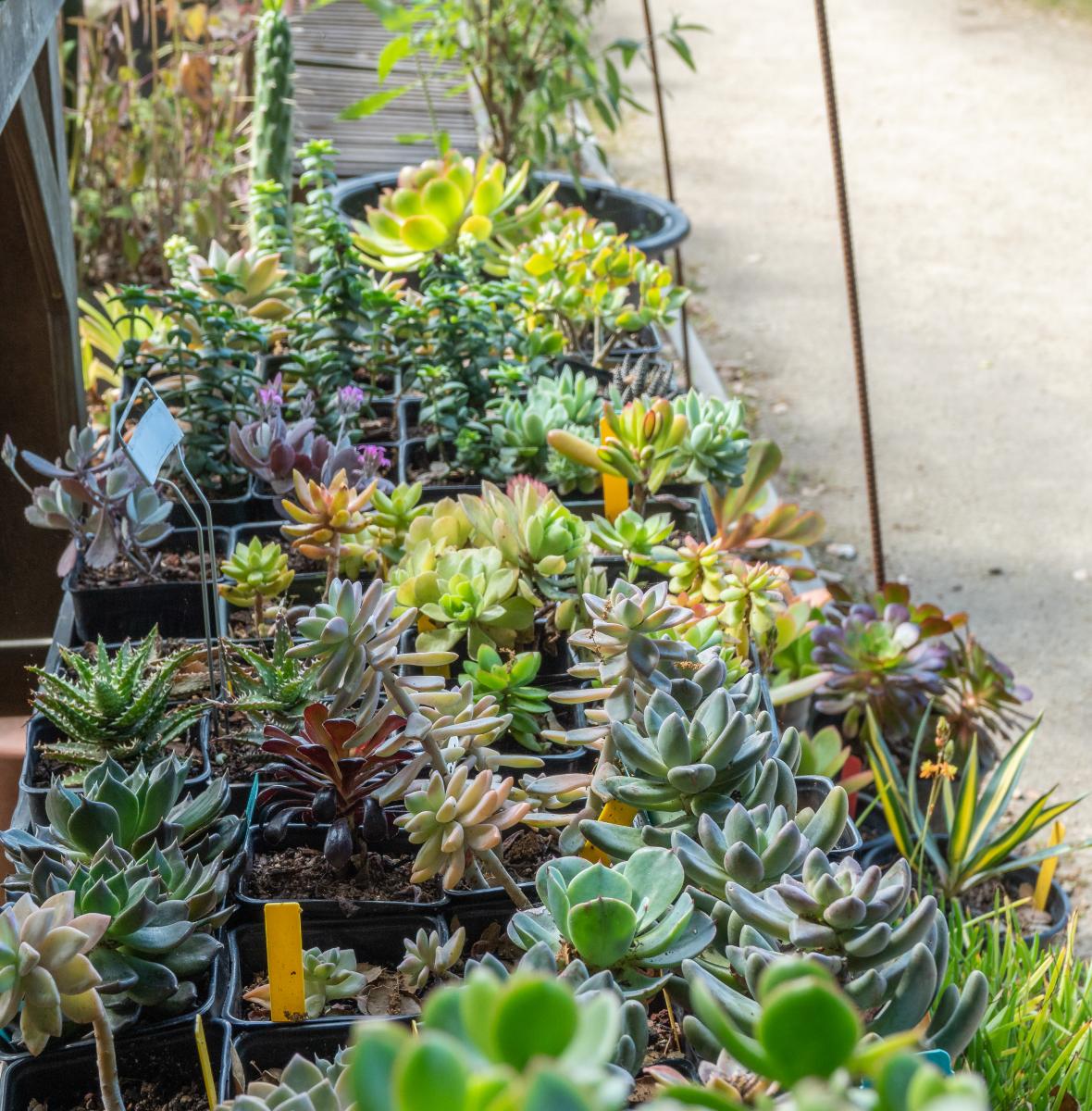
A wide range of succulents are available for purchase at Gamble.
That’s the end of our tour. We hope you enjoyed it. Please free to send us your comments, ideas and any suggestions you might have for future tours to [email protected].
Gamble Garden is a 501c(3) non-profit organization; we receive no city, state or federal money and we charge no admission fee. We are supported through memberships, donations and special events. Please consider becoming a member and/or donating so that Gamble Garden can continue to be a place of respite, beauty and education for our community. You can find details at https://www.gamblegarden.org/
Photos courtesy of Doug Kalish.
